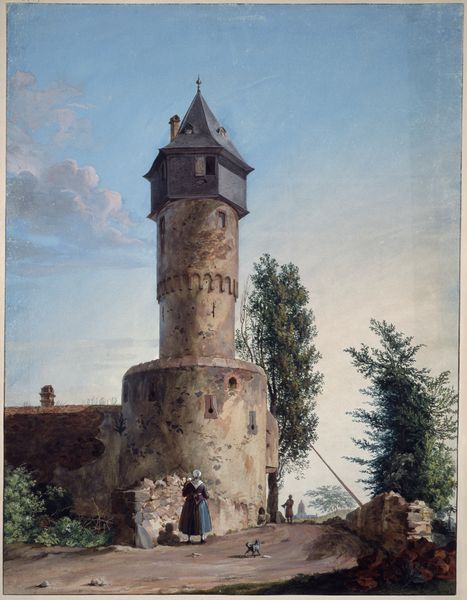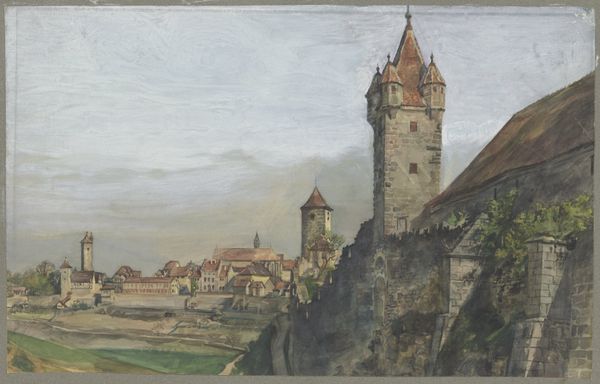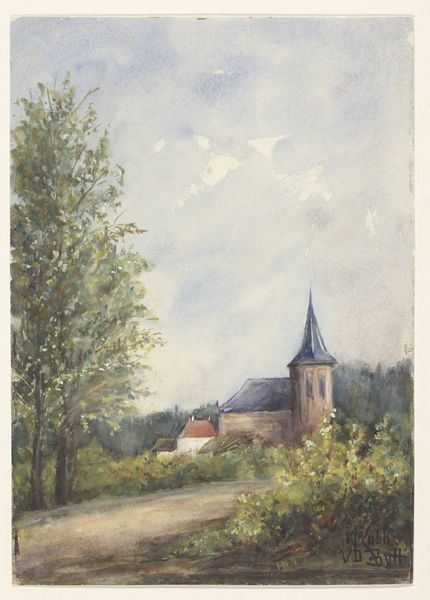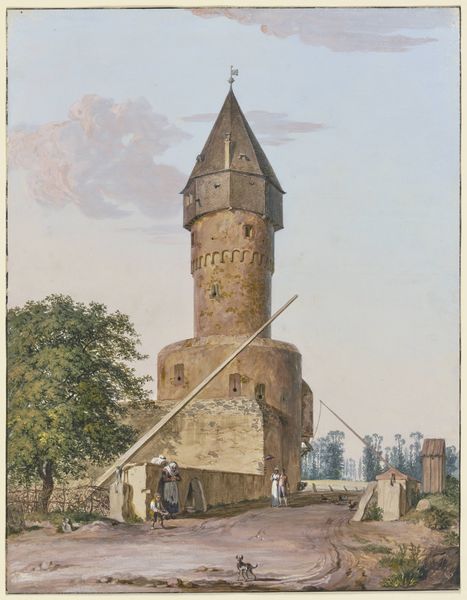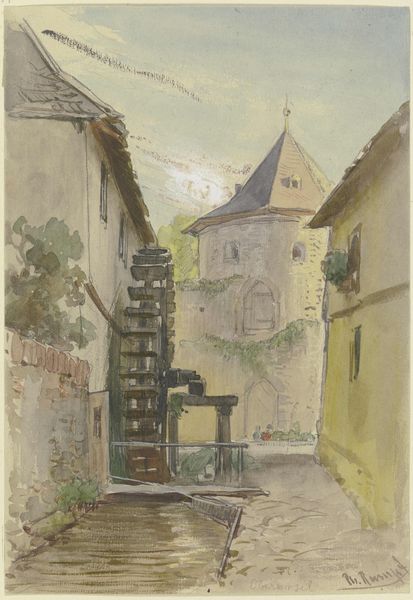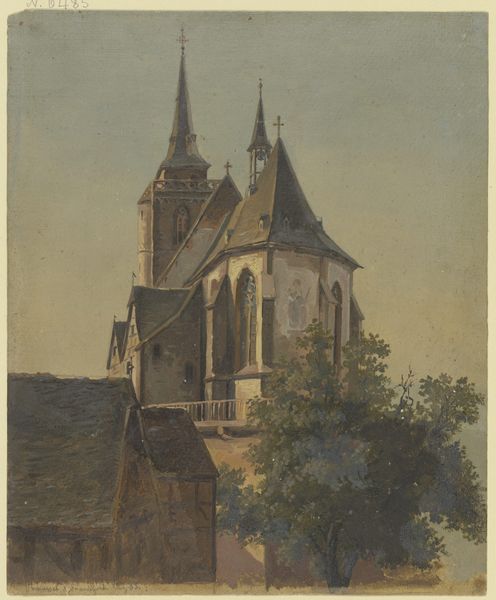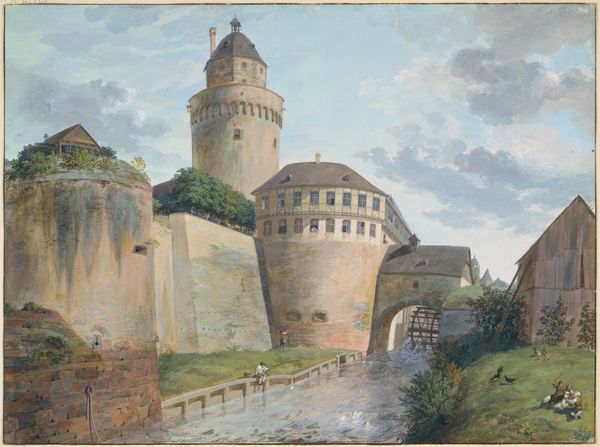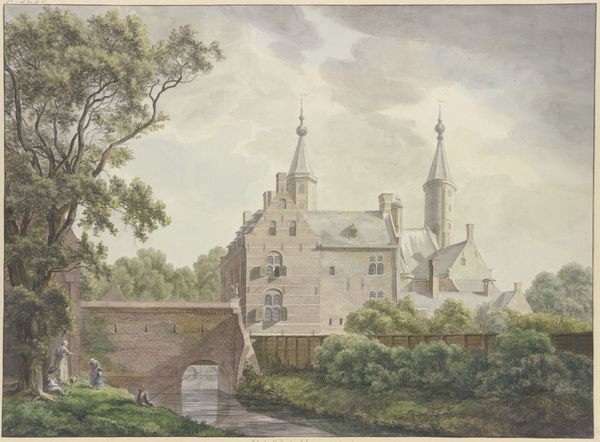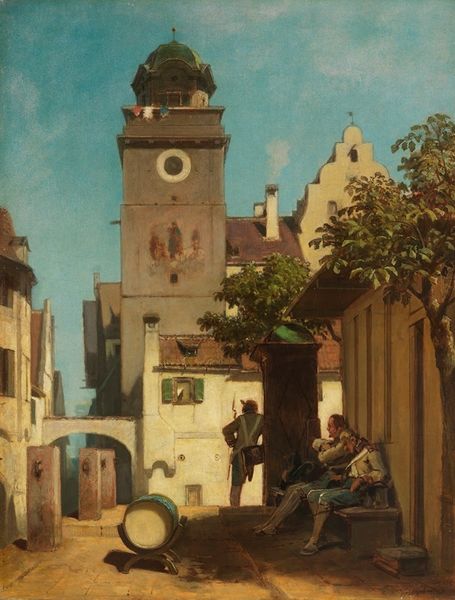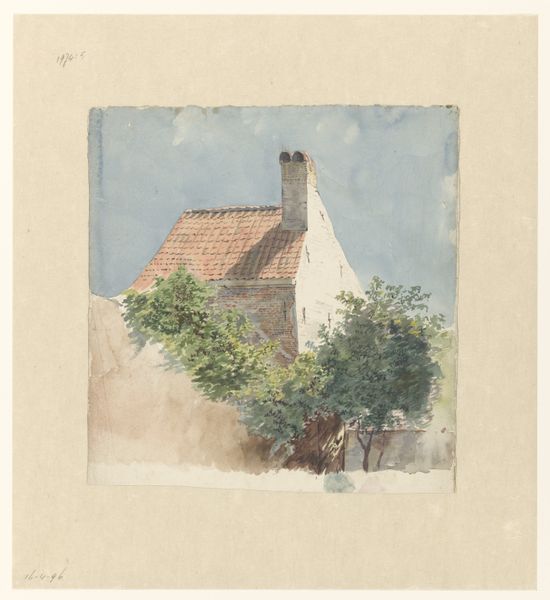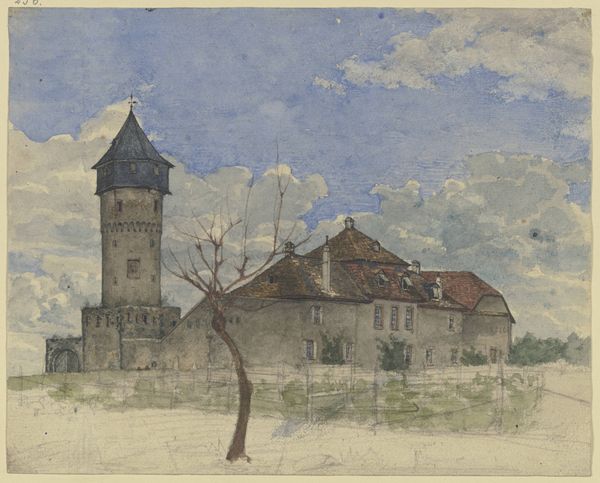
drawing, watercolor, architecture
#
drawing
#
16_19th-century
#
landscape
#
oil painting
#
watercolor
#
german
#
romanticism
#
cityscape
#
watercolour illustration
#
watercolor
#
architecture
Copyright: Public Domain
Curator: Here we have Anton Radl's watercolour and ink drawing, "Die Friedberger Warte zu Frankfurt am Main". Editor: Oh, how lovely, yet…melancholy. There's a looming sense of abandonment in the decaying structure, the grey skies, and those two scurrying figures. It feels heavy, almost mournful. Curator: The image is dominated by the imposing tower, the Friedberger Warte. During the period of the Holy Roman Empire, Frankfurt maintained the largest municipal territory. To protect it, several outposts and towers were maintained by watchmen like the Friedberger Warte. The artwork gives us some context how urbanity shaped the landscape. Editor: The tower certainly conveys authority, even in disrepair. Look at the little weather vane up top! It reminds me of medieval heraldry, claiming ownership, announcing a domain. But what strikes me most is how small the people are compared to the structure and landscape. Are they escaping something, perhaps? It feels fraught with implied narrative. Curator: It is possible they are escaping from the weather. Radl captured the essence of the pre-industrial landscape. Frankfurt citizens used it for excursions into nature, beyond the city wall, to seek enjoyment and respite. The placement of figures also suggests an engagement with romantic ideals of nature, like those espoused by the artist Caspar David Friedrich. Editor: I see your point about the Romantic influences; there is certainly that sense of awe and sublime fear, but also a visual narrative. This image captures transience: weather turning, time passing, structures crumbling, lives hurrying by. Curator: Radl presents not just a geographical space, but a lived space; he is offering commentary on how we engage with these landmarks. Consider his choices and his motivations in representing this cityscape to audiences eager for landscape views that tell stories. Editor: That's such a helpful observation. For me, Anton Radl evokes a feeling more than a statement—a sense of time’s relentless movement, beautifully captured through crumbling stone and a threatening sky. Curator: Agreed. A blending of institutional function and evocative feeling that characterizes much landscape imagery of the period.
Comments
No comments
Be the first to comment and join the conversation on the ultimate creative platform.

